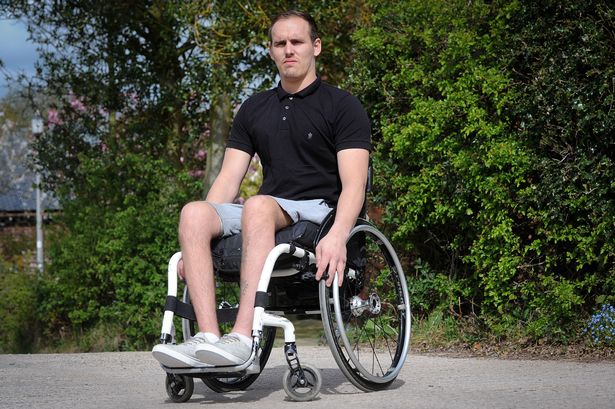Written by Mackenzie Saunders:
Each year, the National Spinal Cord Injury Statistical Center (NSCISC) generates an annual statistical report about people with spinal cord injuries in the United States. These reports contain information such as cause of injury, level of injury, and health information following the injury. Annual statistical reports are useful while considering spinal cord injury treatment, along with spinal cord injury awareness, education, and advocacy.
Since the NSCISC started releasing annual reports in 2000, one data point has stayed consistent each year—approximately 80% of all new spinal cord injury patients in the United States are male. For decades, there has a been a huge gender disparity in the U.S. spinal cord injury community; many more men have spinal cord injuries compared to women. This raises the question: Why are men more likely to sustain spinal cord injuries than women?
Looking at Different SCI Causes
According to the NSCISC, the top five causes for SCI for men are as follows:
- Automobile accident (28.8% of men with SCI)
- Fall (22.6% of men with SCI)
- Gunshot wound (16.6% of men with SCI)
- Motorcycle accident (7.1% of men with SCI)
- Diving (6.6% of men with SCI)
The top five causes for SCI for women are as follows:
- Automobile accident (46.8% of women with SCI)
- Fall (22.9% of women with SCI)
- Gunshot wound (9.4% of women with SCI)
- Medical/surgical complication (5.3% of women with SCI)
- Diving (2.5% of women with SCI)
These numbers reveal a lot of information about why men are more likely than women to sustain spinal cord injuries. First, men are more likely to suffer from a gunshot wound than women. This stems from the fact that, according to the Kaiser Family Foundation, men are more likely to engage in violent situations, and men are more likely to be a target of gun violence. These increased likelihoods for male violence and male victimization in gun violence contribute to men sustaining spinal cord injuries at a higher rate than women.
Second, men are statistically more likely than women to drive a motorcycle. Motorcyclists, on the other hand, are more likely than standard vehicle drivers to be involved in an accident on the road, and these motorcyclists are significantly more likely than standard drivers to sustain a serious injury during an accident. Thus, motorcycle usage contributes to men being more likely than women to sustain spinal cord injuries. This is evident by the 7.1% of all male SCI cases being caused by motorcycle accidents, while motorcycle accidents account for less than one percent of all female SCI cases.
Lastly, a cause of spinal cord injuries not included above is participation in sports. 11.2% of men with spinal cord injuries are injured during a sporting activity, compared to 5.6% of women with spinal cord injuries. This disparity can be attributed to the fact that men are more likely to participate in sporting activities than women (especially as age increases), and thus, are more likely to be injured during a sporting activity than women.
Considering Recklessness and Age
The NSCISC reports that men are more likely than women to be injured due to a personal reckless act. Personal reckless acts, in the world of spinal cord injuries, are defined as careless acts by the injured party, such as driving recklessly, diving recklessly, and being reckless during recreation.
First, men are more likely to be injured while driving recklessly. According to a study conducted by CBS, men are statistically 3.4 times more likely to be cited for reckless driving. In this study, reckless driving included speeding, swerving, not using lane change signals, acts of road rage, and other acts. Thus, men are generally more likely than women to take careless action on the road, which increases their chances of experiencing an automobile accident that results in serious injury. However, recklessness is not the only factor in male automobile accidents causing SCI; the National Safety Resource Center also cites that men, on average, drive almost 7,000 more miles per year than women. Therefore, men are more likely than women to be driving at a given time, meaning they are more likely to be in an automobile accident.

Second, men are more likely than women to be injured by a reckless dive or reckless actions during a recreational activity. A big factor in this is age. Statistically, men who are injured through diving and recreational activities fall far below the median age of SCI patients. This is because young boys and young men are more prone to making reckless decisions than young girls and young women, often due to peer pressure and expectations of masculinity (according to a study conducted by The Yorker). Therefore, recklessness, age, and injury all go hand in hand, as the SCIs sustained due to the reckless decisions of young boys and young men ultimately increase the overall number of men who sustain spinal cord injuries.
Men and SCIs
Men are therefore more likely than women to sustain spinal cord injuries in the United States because of five key reasons: male violence, motorcycle usage, participation in sports, dangerous driving, and reckless decisions by young boys and men. Of course, this is not an exhaustive list of all factors contributing to the increased rate of SCIs among men. This is only the beginning of the necessary research that must be done relating to spinal cord injuries, gender, and causes. Only after conducting extensive and needed research can we implement the best measures towards preventing spinal cord injuries in people across all genders.

